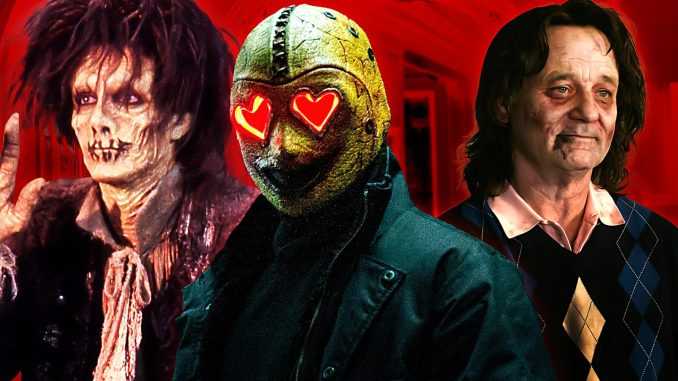
When it comes to slasher films, the iconography of the killer is often more important than the story. As long as fans are being given the chance to watch Michael Myers show up in his white-painted Captain Kirk finest to slaughter anyone who gets in his way, no one cares about trying to make sense of the the nonsensical and convoluted timeline of the “Halloween” franchise. Even people who have never watched a horror movie in their life could probably identify Jason Voorhees from “Friday the 13th” in his iconic hockey mask, or clock Leatherface from “The Texas Chain Saw Massacre” even without his titular weapon. The look of a slasher villain should strike fear into the hearts of the audience … but it should also be memorable enough to be marketable.
It’s a delicate balance, and it’s not the easiest thing in the world to pull off. The basic “sackhead” look of Jason in “Friday the 13th Part II” is only memorable because it’s Jason, because when the design first emerged five years earlier in “The Town That Dreaded Sundown,” it didn’t hit with audiences. (It also didn’t hit when the film got a metafictional sequel in 2014, because the slasher was just … a guy in a sack mask). Even a “bad” slasher mask can still be memorable (I still love you, Fencing Mask in “Urban Legend: Final Cut), but if you want your killer to pack a punch, you gotta call in the experts.
One of the best in the business is Tony Gardner, whose design for the new Valentine’s Day slasher film “Heart Eyes” (read our review here) is already being hailed as one of the best slasher villain designs in years. This shouldn’t be surprising, considering Gardner has one of the most impressive genre film pedigrees of anyone working today in the makeup and special effects field.
Tony Gardner got his start on the biggest music video, ever
Before we move forward, it has to be noted that Tony Gardner has a wild origin story. As he discussed on The Flesh and Blood and Bone Podcast he co-hosts with his daughter, filmmaker Kyra Gardner (who we interviewed for her documentary “Living with Chucky”), the way Tony Gardner broke into the industry doesn’t really exist anymore. He grew up around Cleveland, Ohio, and became fascinated with special effects and creature designs. He made facehuggers and an E.T. mask in his spare time, as just a few examples, before moving to Los Angeles to go to college. Once in Los Angeles, he decided to use his position as a student to get him closer to his heroes like Steven Spielberg and effects artists Carlo Rambaldi and Rick Baker. He got himself onto the Universal lot by taking a page out of Spielberg’s book by dressing up, showing up, and acting important but the way he met Rick Baker would get someone put on a watch list if replicated today.
The at-the-time college student knew where Baker’s shop was, so Gardner drove to the city and looked up all of the people named “Rick Baker” in the phone book, wanting to interview him for a school project (that didn’t actually exist). He eventually found himself on Baker’s doorstep, but he was out of town shooting a movie so Gardner spoke with Baker’s father, and left him slides of his amateur effects work. Eventually, Rick Baker contacted Gardner and agreed to be interviewed. They spoke for hours and the interview became conversational, but nothing really came from it. However later that summer after 18-year-old Gardner had returned home to Ohio between semesters, Baker tracked Gardner down and called his family home to offer him a job on a music video set requiring a bunch of zombies. This way, Gardner would know if this was the industry meant for him. He eagerly agreed and was on a plane the next day to return to Los Angeles.
That music video was Michael Jackson’s “Thriller,” arguably the greatest music video of all time.
Tony Gardner is a living special effects legend
Listening to Tony Gardner discuss his career with his daughter Kyra on their podcast is surreal at times because there’s a humble casualness to name-dropping projects like “Return of the Living Dead,” “Army of Darkness,” “Hocus Pocus,” “Hell Fest,” “Freaky,” “The Addams Family,” “Freaked,” “The Blob,” the “Zombieland” films, and the “Chucky” franchise. Gardner is so intrinsic to the latter, that he even plays a fictionalized version of himself in the faux-movie within a movie “Chucky Goes Psycho” in “Seed of Chucky,” and is killed on screen by the very puppet he’s been operating for over a decade. These titles alone are enough to put him in god-tier status, but Gardner’s work isn’t exclusive to the world of horror.
He’s also worked on films like “Honey I Shrunk the Kids,” “Ace Ventura: When Nature Calls,” “Happy Gilmore,” and “Batman & Robin,” not to mention the bodily transformations shown in “Shallow Hal,” “Hairspray,” the “Jackass” films, and “Beastly.” He’s also prolific in the world of commercials, creating the designs for the Geico Cavemen (and subsequent TV show I’m sure you forgot existed) and the delightfully weird Halloween Snickers commercial featuring the rubber-faced woman at the grocery store.
But the one that always knocks me back is knowing that he helped create the signature helmets for Daft Punk, as well as the absolutely cursed [complimentary], skinless robot for their “Technologic” music video (which is a “Seed of Chucky” animatronic repurposed to give me, specifically even more nightmares). His Alterian Inc. company has solidified itself as an industry leader in prosthetic makeup effects, animatronic design, and specialty prop creation, not to mention his growing roster of slasher masks.
The Heart Eyes mask is horror perfection
When it came time to create the Heart Eyes mask, Gardner and Bryan Christensen took the ideas from the film’s creative team and brought it all to life. The visible seams and exterior laces elicit both a BDSM-inspired gimp mask and that of “The Collector,” with a fabric choice that feels reminiscent of Dr. Decker in “Nightbreed,” the tanned flesh of Leatherface, and yes, even Sackhead Jason. It’s an incredibly classic approach to a mask but injected with the contemporary iconography of the heart eyes emoji, glowing brightly to evoke the ominous threat of red lighting or the emphasis of attention like a Tex Avery wolf admiring from a distance. The eyes are also bespoke, providing the killer the advantage of night-vision, a sexier take previously seen by Buffalo Bill in “The Silence of the Lambs.”
The mouth is, of course, carved into a Glasgow smile, a grotesque twist on the universally accepted presentation of happiness. Combined together, the Heart Eyes mask is truly unforgettable. During a recent Reddit AMA, “Heart Eyes” director Josh Ruben talked about the collaborative effort that went into the mask’s design, between Gardner, Christensen, and the team at Alterian turning ideas into a tangible reality, to the VFX team in New Zealand led by Stef Knight who applied a Vaseline-esque sheen to the mask so that even in the dark, “the slightest light is picked up and refracted in an eerie, sweat-like way.”
When looking at the mask for “Heart Eyes,” we’re not just seeing a cool slasher villain, we’re seeing the culmination of over 40 years of expertise and horror history brought into a single design through creative collaboration, led by an industry genius.
“Heart Eyes” is now playing in theaters everywhere.

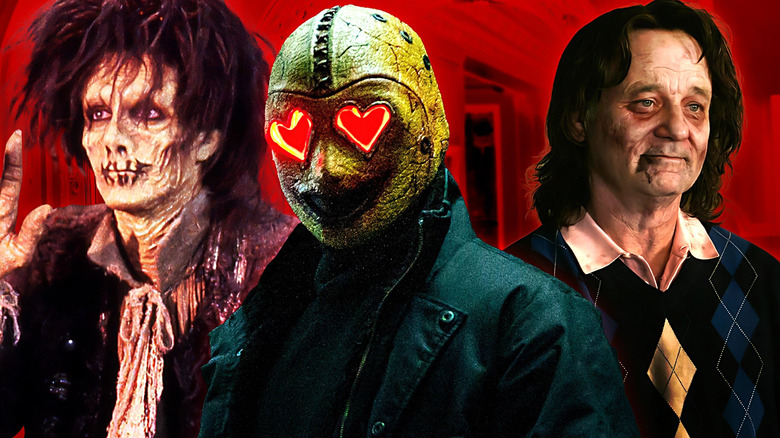
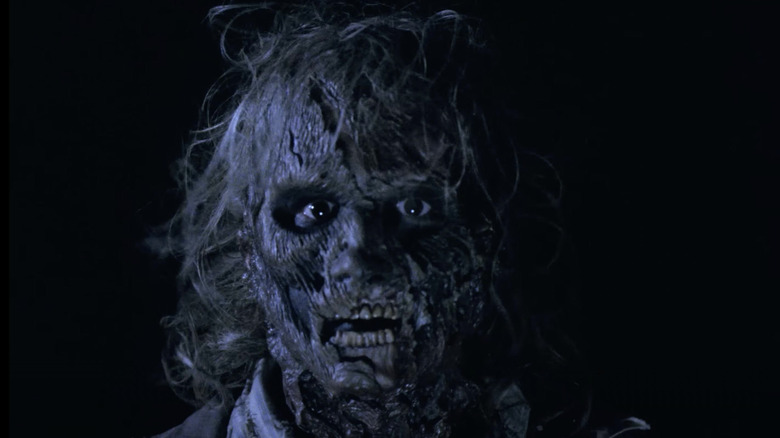
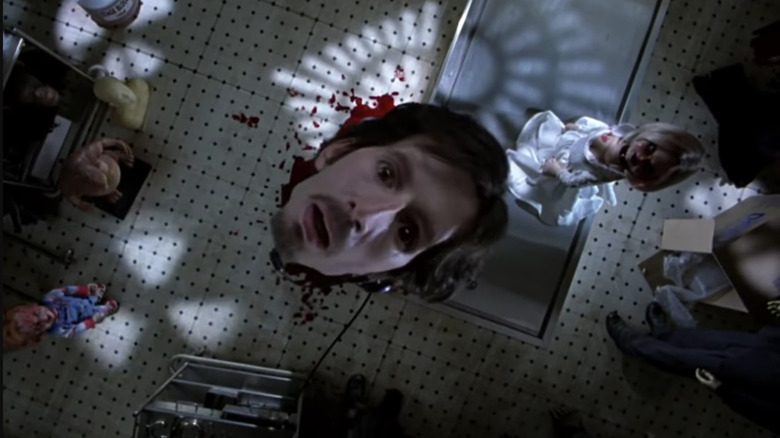
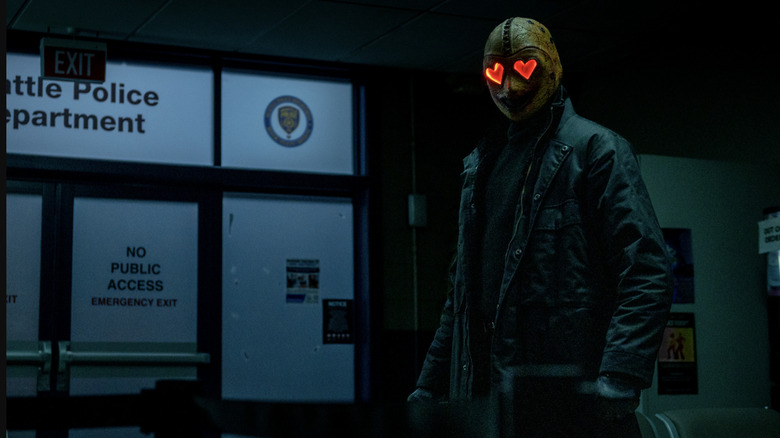
Leave a Reply